The best guitar cables will vary by individual and use, but Mogami Gold Guitar Cables hit all the marks when it comes to quality, durability, and a noise free experience. Mogami cables are also warrantied for life so never have to worry about future issues. For a full list of choices suitable for every budget, be sure and check out the guitar cable reviews below.
The number one question I would get from other musician friends when I used to build and sell guitar cables was “what is the best guitar cable for the money”, followed by what are the best patch cables.
I used to try to convince them that making their own was the cheapest option and all they needed was a soldering iron for guitars and bulk wire. Unfortunately, most people don’t have the time or desire to learn.
The best quality guitar cables on the market can improve your sound, but not in a way that most people think. Good guitar cables will give you the cleanest, noise-free sound from the output device to the input device. By noise free I mean free from electrostatic interference in the form of pops, crackles, and of course, static or humming.
Beyond giving you a noise-free sound, there is no scientific evidence that unbalanced cables will actually improve tone. That said, there is certainly a lot of people out there that swear their tone has improved, and that is great but that is subjective. I will leave it at that.
The most frequent comments I heard after outfitting studios, music venues, and musicians was how clean and improved their guitar, pedal board, or other instruments sounded. There isn’t much to instrument cables and the guide below will give you a better understanding of what makes a good cable and how to choose.
Ultimate Guitar & Instrument Cable Guide
Of the many kinds of cables used in the world sound and pro-audio, balanced cables, unbalanced cables, and MIDI cables are some of the most common. Instrument/Guitar cables are unbalanced. An example of a balanced cable is a microphone cable.
Unbalanced cables contain only a single conductor (wire) and shield. The shield is what blocks any electromagnetic, electrostatic, and radio-frequency interference. In this guide, I will focus only on unbalanced instrument cables. This covers electric guitars cables, acoustic guitars cables, patch cables, and many other instruments.
I will also go into cable connectors a little bit as well. The cable connector is often overlooked but what good is having the best guitar cables if you don’t also have the best cable connector attached to them. For unbalanced cables, you will find TS connectors which I will explain more in a bit.
KEY FEATURES AFFECTING PERFORMANCE
- Length
- Shielding
- Conductor
- Connector Quality
Anatomy of A Guitar Cable: Unbalanced Instrument Cables
There are a number of components that make up a guitar cable. You will quickly learn that the cable assembly is only as good as the weakest part. It does no good to have the best center conductor there is if you do not have adequate shielding or an outer jacket that will not stand up to abuse.
It is important that every components is as good as the rest. If there aren’t than you are not getting the best guitar cable money can buy.
CONDUCTOR
The conductor of an instrument cables carries the current/signal from the source or instrument. The conductor resides in the very center of the cable and is surrounded by an insulation layer, an electrostatic shield, copper shield which also acts as a grounding wire, and a protective outer jacket.
Conductors are found in solid and stranded configurations. Stranded configurations are most common and are more durable. In premium cables you will often see that the manufacturer uses ”Oxygen-Free Copper” or ”Liner-Crystal Copper” in the cable. This just means that the copper is purer than standard copper which allows for better conductivity and cleaner signal. This copper is also more resistant to oxidation which could also degrade performance.
- Solid Conductors: Solid conductors are just that, a solid copper wire, usually 18-24 AWG in size, at the center of the cable. Solid cables are actually considered superior to stranded cable for audio applications and Evidence Audio demonstrates that tonal difference in this comparison. This is due to the signal jumping between the strands of a stranded conductor which is not present in solid conductors.
Unfortunately, due to abuse that is all too common with instrument cables, it is usually not a good option due to durability concerns. Solid strands are prone to breakage if moved around a lot. That said, they are a great option for permanent studio installations as well as pedal boards. I actually wired up a massive pedal board once and was able to save a ton of room using the Evidence Audio Monorail cable. - Stranded Conductors: A stranded conductor is made with 26 or 41 strands of fine copper wires between 32-36 AWG twisted together to form a larger wire. The common formula is 26 strands of 34 AWG for most cables or 41 strands of 36 AWG which is common in premium cables. Japanese manufacturers Canare and Mogami have been leaders in the use of very fine 40 AWG copper wire in their premium cables.
Using stranded wires instead of solid provides for a much more durable cable that is achieved by allowing more flexibility but at an increased cost to produce. This is of course only one of a number of factors that affects a cables flexibility. However, smaller wires the increase in flexibility.
It is also important to note that some manufacturers tin the copper strands which is a process of dipping the copper strands in a molten tin to coat them before assembly into a wire. This increases the shelf life and allows for prolonged storage before needing to be made into a large wire. This does not improve the performance of cables and can actually cause an inferior sound through what is known as a skin effect which affects sound quality. Premium cables usually always use bare copper. - Twisted Pair: This form of a conductor is created when two conductors (whether solid or stranded) of a single circuit are twisted together for the purposes of canceling out electromagnetic interference (EMI) from external sources. This differs from stranded center conductors in that each individual conductor of the twisted pair is encased in its own insulation and electrostatic shield then twisted together.
This creates a superior cable in terms of blocking out EMI and other interference. This will typically be the last line of defense if you are having issues with noise interference. The downside to these cables is their stiffness and using solid center conductors, although manufacturers like Evidence Audio and Lava make a stranded twisted pair for added flexibility. The other downside is cost, these are some of the priciest cables out there.
INSULATION & CAPACITANCE
When two materials carrying a current are separated by an electrical barrier, a capacitor is created. In instrument cables the conductor and shield carry current which are separated by the insulation.
For other instruments, the capacitance may not matter as much but for electric guitar cables, the capacitance should usually be as low as possible. The lower capacitance results in better high-frequency response and minimizes any handling noise. However, some guitarists are known to take advantage of the high capacitance and its high gain to enhance the high mid frequencies.
The insulation surrounding the conductor is usually made from thermoset (rubber, E.P.D.M., neoprene, Hypalon) or thermoplastic (polyethylene, polypropylene, PVC, FPE) materials. Instrument cables are most commonly made with high-density polyethylene as it is both cheaper and offers the lowest capacitance of around 2.3 compared to rubber which is 6.5.
High-end cables often have often used insulation that contains special polymers further lowering the capacitance providing even better performance.
ELECTROSTATIC SHIELD
When an instrument cable is flexed and bent, static electricity can be generated by the copper shield rubbing against the insulation. The electrostatic shield acts as a semi-conducting barrier between the copper shield and the center insulation.
This ES shield discharges these static electrical charges and without it you would hear the obnoxious crackling noises this static electricity generates. These shields are made of either Dacron or conductive PVC.
- DACRON: This is a carbon impregnated material often referred to as ”noise-reducing tape” or semi-conductive tape .
- Conductive PVC: Also known as ”carbon-loaded PVC” or C-PVC, this material is extruded and guarantees 100% coverage of the insulation.
Of the two, C-PVC is the superior insulation due to a number of factors. C-PVC has superior conductivity and coverage. It is also thinner and more flexible than Dacron tape.
OUTER SHIELD
The copper shield of instrument/guitar cables acts as a return conductor for the signal current. It also acts as a barrier to prevent any interference from reaching the center conductor.
This interference is in the form of radio frequency (RFI) (CB and AM radio), electromagnetic (EMI) (power transformers) and electrostatic (ESI) (SCR dimmers, relays, fluorescent lights).
- Braided Shield: Just as the names states, this form of shield braids the copper wires over the conductor, insulation, and ES shield. This braided shield offers some advantages by providing nearly 97% of consistent coverage from interference even as the cable is bent and flexed.
The coverage provided by this braided shield is superior in blocking EMI and RFI which is further enhanced by having very low inductance. The other benefit comes in the form of the increased strength of the cable.
The benefits of a braided shield are not without drawbacks. This shield will greatly reduce a cables flexibility and are usually more expensive. They can also have their performance reduced by breaks in the shielding should they be bent or stressed too much. Kinks can ruin a braided shield.
The braided shield is best used in studio applications or instrument applications where the cable will not be subject to a lot of bending or kinks but will stand up to other abuse. - Spiral Wrapped Shield: This is also known as a serve shield and is applied by wrapping copper strands around the cable in a single direction. This provides for a very flexible cable and makes it a more reliable option in real-world applications. Serve shield cables are the most common type of guitar cable.
The spiral/serve shield is usually cheaper and a more practical option for touring musicians, live music venues, and in general best for anyone who subjects their guitar cables to a lot of abuse. - Foil Shield: This is made up of a thin layer of mylar-backed aluminum foil and a copper drain wire. The foil shield/drain wire combination is very cheap, but it limits flexibility and is prone to failure with repeated flexing. I do not recommend this form of shield.
OUTER JACKET
The outer jacket of a guitar cable is most commonly made from PVC but can also be made of rubber or neoprene. Not too much thought needs to be given to the outer jacket unless you want an additional layer of protection on your cables.
If you want additional protection, look for guitar cables with a nylon braided outer jacket. These cables will include both the PVC jacket and an additional braided nylon jacket which provides additional durability. You will sacrifice a bit of flexibility with this added protection.
Additional Features Affecting Guitar/Instrument Cable Performance
TS CONNECTOR
Every good guitar cable assembly needs a quality connector to accept and deliver the signal from input to output, unhindered. Whether you call them a connector or jack plug, the unbalanced cable uses what is known as a TS connector.
The TS connector/jack plug contains a TIP and a SLEEVE hence the “TS”. These two components refer to the electrical contact of the plug.
- SHELL & PLATING: High quality connectors are manufactured in brass and plated in nickel or gold. The reason they are plated is due to brass being prone to oxidation. There is literally no difference in tone when it comes to nickel vs gold connectors but gold is very resistant to oxidation. Gold is softer which makes it more prone to wear which is why I usually prefer nickel for.
- CORE: The jack plug core connects the tip to the wire and is the point of contacts for input and output devices. Brass and copper are superior core materials as they are better conductors, copper being the best. Stay away from steel which is a poor conductor material.
- STRAIGHT/RIGHT-ANGLE: Jack plugs come in both straight and right-angle configurations. Some guitars and especially guitar pedals are better suited to the right-angle plugs.
- SILENT STYLE: This feature is great for musicians who perform live as the plug’s built in feature will automatically mute the guitar cable when hot-swapping. This cuts out any popping or squeals when switching the cable to a different instrument.
Not all instruments are compatible with this type of plug so be sure to research your instruments compatibility. Silent style plugs should always be plugged directly into the instrument and not the amp as is can damage the connector. - SOLDER-LESS CONNECTORS: Solder-less connectors are convenient jack plugs that do not require solder to connect to your cable. The are popular for those build pedal boards. Gorge L cables also use solder-less connectors.
I do not typically recommend this style as they are not as reliable. However, if you must go this route, I recommend using them with a solid conductor wire as it will be more reliable. Evidence Audio has one of the best solder-less kits available which includes their Monorail cable which is a solid conductor as seen above.
There are many manufacturers of jack plugs but Switchcraft, G&H Industries , and NEUTRIK are the best jack plugs on the market. What makes them so great is the quality and manufacturing methods.
G&H Industries jack plugs use a solid copper core through the point of contact at the connector tip in their construction which is arguably superior. Neutrik utilizes a brass core, and Switchcraft claims a copper alloy which is likely brass as well.
One of the most common issues or failures of guitar cables is not the cable itself but the contact or connection to the jack plug. One of the best ways to avoid cables that will fail is buying a guitar cable that is assembled with premium jack plugs. Not only will the materials be top notch, but the strain relief will be superior. The strain relief will protect the solder joint from failure which is crucial.
LENGTH
If you want the best experience possible out of your guitar cables, the general rule is to buy a cable that is NO longer than you need. Shorter is always better and this is because the longer an unbalanced instrument cable is, the more unwanted noise and hum you will encounter.
In general, you can expect a relatively noise free experience in cables 12 feet and shorter. In terms of maximum length, you can find cables available for purchase beyond 25 ft but I strongly advise against it unless you are buying very high-end guitar cables. Given that the longer the cable the more noise you will encounter, longer cables require better materials.
If you absolutely have to have a longer cable it becomes more important to buy premium guitar cables to ensure the best materials possible are used, limiting the amount of noise you will experience. The other tip is to buy braided shield cables for the longer lengths to ensure better interference shielding.
The Best Guitar & Instrument Cables – Reviews
Since most manufacturers make several models of guitar cable in varying quality I have grouped the cables into several tiers. From budget cables, more expensive premium cables, you can quickly jump to the category that suits your needs.
Budget guitar cables will usually retail for under $25, mid-range cables can retail from $25-$50, and premium guitar cables will cost over $50 and in some instances of $100 depending on the length. Finally, if you are looking for the best patch cables I have you covered as well!
Having owned a guitar cable business I have tried and tested just about every one of these brands and cables, as well as heard the customer feedback and these are the best guitar cables out there.
Best Budget Guitar Cables
As I said above, you can expect to pay under $20-$25 for budget guitar cables. While most people may not expect much when it comes to a budget instrument cable decent and reliable guitar cables are definitely available. The cables below should be perfect for bedroom sessions, practicing for live concerts, and anyone who just doesn’t want to spend much.
HOSA GTR210 Guitar Cable Review
“Best Cheap Guitar Cable”
Coming in at one of the most affordable guitar cables on the list, Hosa’s GTR210 instrument cable is a great cable at this price point. The Oxygen-Free Copper (OFC) braided shield will provide excellent shielding from interference.
The cable’s center conductor is 24 AWG OFC made up of stranded copper. The all-metal plugs are serviceable which is great for reparability should you encounter any failures. Overall a cable that can’t be beaten at this price.
Hosa GTR210 Key Features
- Affordable
- Repairable Connectors
- 24 AWG OFC
- Flexible
- 90% OFC Braided Shield
Spectraflex Baldee Review
The Spectraflex Baldee is a trim down version of the original Spectraflex guitar cables. It features the same great cable of the original but does not have protection from the nylon outer-braid that offers additional protection.
A great entry price for a quality cable that comes with an outstanding warranty. If you haven’t tried a Spectraflex Cable grab one now and see its quality and durability for yourself.
Spectraflex Baldee Key Features
- 20 AWG Pure Copper Conductor
- Low 39 pf/ft. Capacitance
- Made in the USA
- Lifetime Warranty
GLS Audio Guitar Cable Review
For the price, GLS Audios’ guitar cable cannot be beat. The tweed cloth jacket provides and outstanding protection making it very durable and able to withstand the abuse of touring musicians.
Not only does this cable feel good and look good, it sounds every bit as good also. There is just no topping the value of this quality cable.
GLS Audio Key Features
- Braided Tweed Cloth Jacket
- Super Durable
- OFC Conductor and Shield
- Low 38 pf/ft. Capacitance
- Very Flexible
Lava Cable Magma Instrument Cable Review
“Best Budget Guitar Cable”
The Lava Magma is the priciest cables of bunch but they are worth every dollar. From the high quality cable to the G&H Show-saver plugs, everything about the Magma cable screams superior performance.
If you want the absolute best guitar cable but can afford to spend too much money, this is the cable you want to invest in. It is good enough for stage and studio but had at a more affordable price.
Lava Cable Magma Key Features
- G&H Show-saver plugs
- Superior Performance
- Rugged Cable
- Low 29.5 pf/ft. Capacitance
- Budget Price
Best Guitar Cables For The Money
When I think of what the best guitar cable for the money should be, these cables stand out for both their premium materials and construction as well as feeling like they are worth what you paid. These are the guitar cables you want if you are performing live, have a home studio, or even a full production studio. You can expect premium and durable materials, shielding, and connectors from G&H, Switchcraft, or Neutrik.
Mogami Gold Instrument Cable Review
“Best Guitar Cable for the Money”
Hands down one of the most popular and well-known premium guitar cables. Mogami cables outfit studios and touring musicians all over the world. Many who have tried Mogami Cables considered them to be among the best guitar cables on the market.
Mogami Gold series cables are assembled using Mogami 2524 High Definition instrument cable and Neutrik connectors. It is a low capacitance cable that has an extremely low-coloration design which helps to maintain the unique tone of the instrument used. It also utilizes a hi-density shield which aids in eliminating noise. In my experience, these are some of the quietest cables I have tried.
If you are someone who needs flexibility, the 2524 cables used in the Mogami Gold assembly is extremely flexible all while maintaining minimal to no handling noise. If you have ever used or handled Mogami Cable you know right off the bat how quality these cables are.
Mogami Gold Key Features
- Neutrik plugs
- Very flexible
- Noiseless
- Low 39.7 pf/ft. Capacitance
- High quality materials
Lava Cable Blue Demon Guitar Cable Review
“Best Mid-range Guitar Cable and Most Affordable”
The Lava Blue Demon is often compared to Mogami Gold cables as it features very similar characteristics but it is available at a better price. Lava Blue Demon is very flexible as well as durable and holds up well for the touring musicians out there. I have encountered numerous touring musicians that use the Lava Blue Demon and swear by their quality and durability.
The G&H plugs used are very high quality and features a solid copper core which provides for a copper to copper conductor continuity which provides for better signal transfer in theory.
For a quality cable in this price range, they are excellent for touring musicians and are certainly suitable for the studio though you may get better studio performance with other cables.
Lava Cable Blue Demon Key Features
- Made In The USA
- G&H High Clarity plugs
- Rugged Cable
- Low 23 pf/ft. Capacitance
- 93% Shielding
DiMarzio EP1700 Overbraid Cable Review
“Great Quality and Durability”
DiMarzio EP1700 cables are one of the most durable cables in this class of cables. The braided copper shield offers some of the highest shield coverage while also provided protection against crimping and kinks. The nylon over-braid provides, even more, protect against abrasion and tearing of the PVC jacket.
The EP1700 is not only durable but they sound great as well and maintain low stage noise as well. This robust cable is a great option for those who keep abusing and destroying cables while one tour. They can take abuse and still perform since they are so durable.
That said, if you aren’t hard on your cables or are an audiophile I would recommend one of the other options in this group of cables. These cables do sound good but they do not seem to produce a sound that is great as say Mogai or Lava.
DiMarzio EP1700 Overbraid Key Features
- Extremely durable
- Great stage/touring
- Rugged Cable
- Low 33.27 pf/ft. Capacitance
- 98% shielding coverage
Spectraflex Original Series Cable Review
“Best Guitar Cable for Quality and Durability”
Spectraflex Original is another highly durable cable that is also high quality. I have a few Spectraflex cables in my stash that are many years old which still perform as good as the day I bought them. This cable is manufactured with characteristics and features very much like the DiMarzio cables.
Even as this Original model is thinner than the bigger Fat-So-Flex by Spectraflex it is still fairly stiff. If you need flexibility you won’t get a high amount with this cable but that trade-off comes with the best durability you can find in a guitar cable.
There are also what seems like countless color options if you are a fan of colorful guitar cables. This is another great American made guitar cable option for the guitarist that needs rugged performance.
Spectraflex Original Series Key Features
- Most Durable Guitare Cable
- Great Performance
- Rugged Connectors
- Low 39 pf/ft. Capacitance
- 100% shield coverage
Best Premium Guitar Cables
If you have a music studio and you are looking to wire it up with the best possible guitar cables out there, these are the cables you want. These are also going to be the best option for performing musicians that require cable in extended lengths. The quality and construction of brands like Evidence Audio and Analysis Plus are unmatched.
Evidence Audio Melody Review
“Most Affordable Premium Guitar Cable”
Evidence Audio is one of the premier audio cable manufacturers and their cables are unmatched. If you are wondering what sets these cables apart from every other cable, for starters, Evidence Audion uses a solid conductor in the Melody and while this takes away from its flexibility, it improves the signal and fidelity to the utmost. This combined with the highest quality materials on the market is what makes this and other Evidence Audio cables the best guitar cables available.
One thing to note about Evidence cables is they test the cable for directionality (all cables are directional) and mark this on the heat shrink. You may find a slight preference in the directionality and the marking will help you keep this in mind when plugging your instrument up. Cables will also sound best after carrying a signal for approximately 40 hours due to the dielectric forming and stabilizing.
All of the engineering design and high-quality materials combine to make one of the best studio guitar cables on the market. This certainly comes at a premium price but for the audiophile, it is a small price to pay for such high fidelity cables.
Evidence Audio Melody Key Features
- Neutrik plugs
- 98% spiral shield coverage
- Noiseless
- IGL Solid Copper Conductor
- Low Capacitance
- Foamed Polypro Insulation
Evidence Audio Lyric HG Review
“Best Guitar Cables For Studios – Ultra Premium”
Evidence Audio’s best guest cable is their Lyric HG. There are several differences between the Lyric HG and the Melody and that is the dual solid copper center conductor and the braided shield used in the Lyric HG, compared to the single solid copper conductor and spiral shield in the Melody.
If you read the guide you may be wondering why there are two conductors which essentially makes this a “balanced audio cable” which are common in microphones. There is no question balanced cables are superior to unbalanced cables and the issue as it pertains to instrument cables is cost and diminishing returns. Since Evidence Audio’s main goal is making a superior cable that is the reason for using a twisted pair of conductors.
If you haven’t already figured it out, the combination, not one but two solid conductors twisted into a pair with a braided copper shield makes for an extremely stiff cable which is really only practical for studio use. For audio engineers, this is usually understood and not a problem as the superior performance is what is desired and they are not moved around much. If you are interested in the same level of performance but in a more flexible cable you can look at the Forte by Evidence Audio.
Evidence Audio Lyric HG Key Features
- Twisted Pair of Solid IGL Solid Copper Conductors
- High Density Copper Braid Shield
- Neutrik plugs
- Balanced Directional Cable
- Reduced micro-phonics with high gain amps
Analysis Plus Black Oval Review
Analysis Plus Genesis Pure Review
Lava Soar Review
Best Specialty Guitar Cables
If you are looking for the best electric guitar cables to achieve that vintage sound or even just to have an interesting vintage look these are great, high quality options.
Lava Cable Vintage Coil Review
Spectraflex Vintage Series Review
VOX Vintage Coil Cable Review
Best Patch Cables
Just about every major manufacturer makes patch cables but a few standouts from the bunch, whether it be for the quality or for working best for that cramped pedal board. These are the options that are proven to work in either case.
Evidence Audio Monorail Patch Cable Review
Mogami Patch Cable Review
Hosa Patch Cable Review
I hope you found the list and guide useful. I’d love to hear what others think and if there are any guitar cables not on my list, especially boutique cables, I should try out!


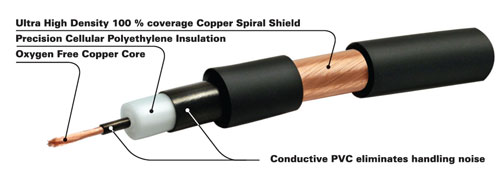
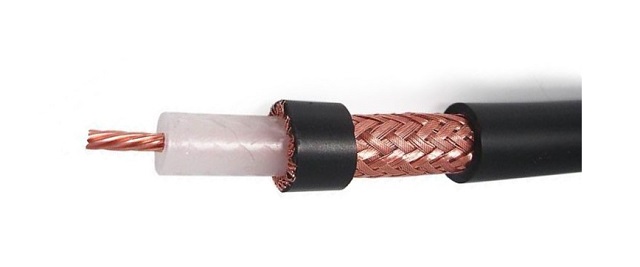
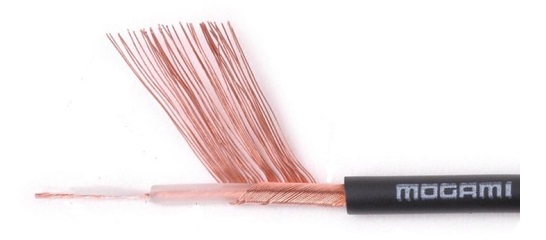
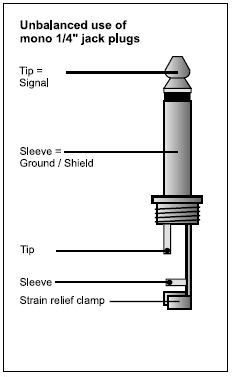
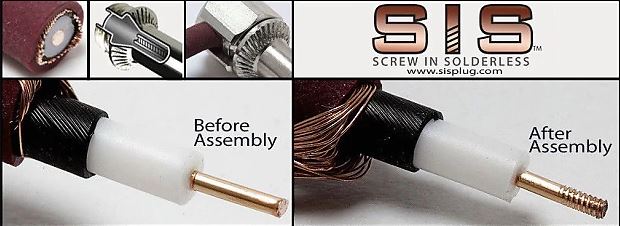
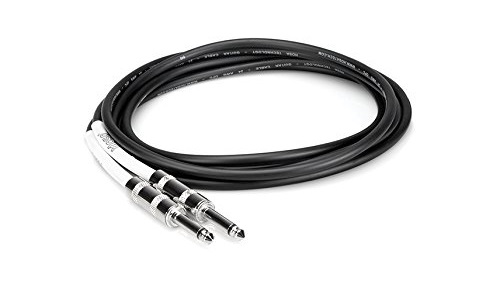
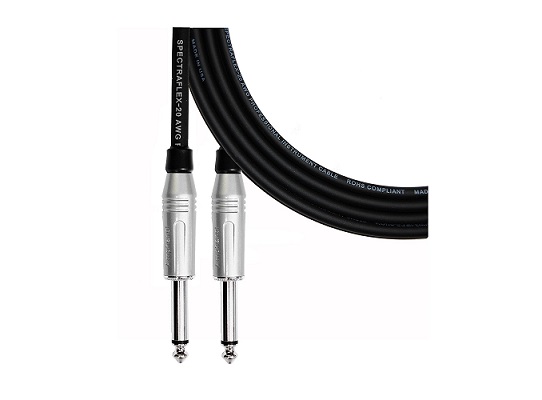
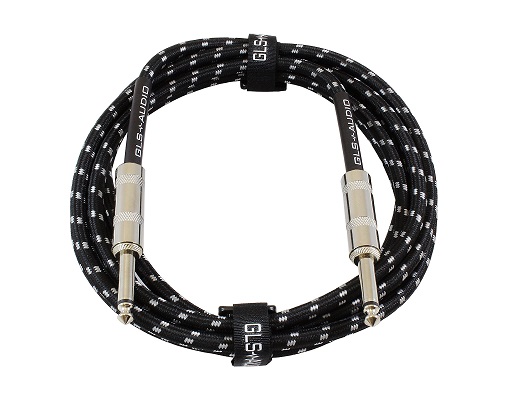


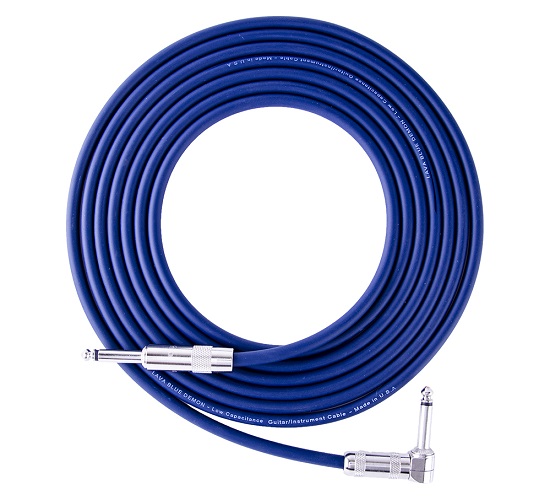
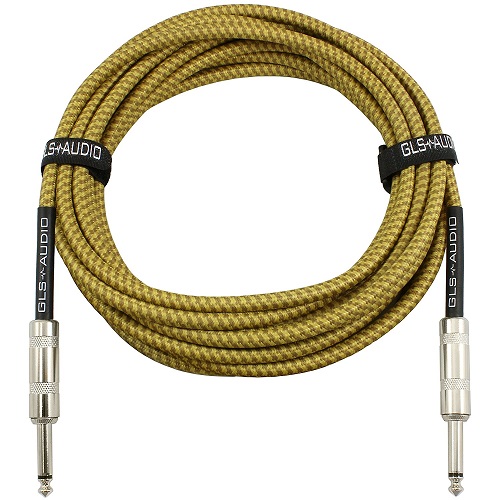
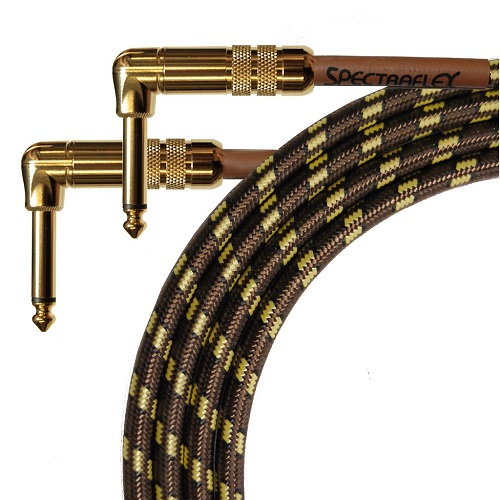
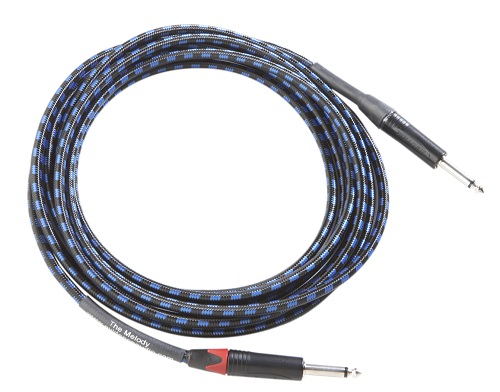
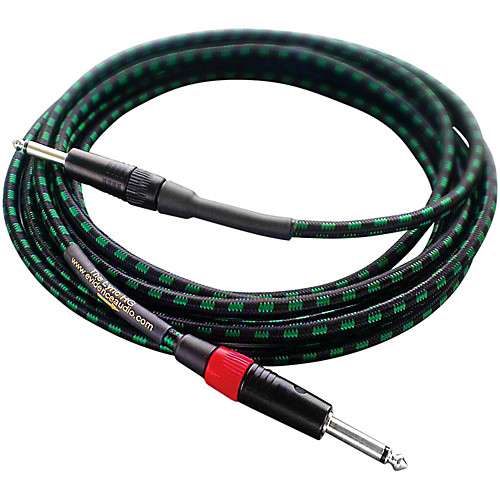


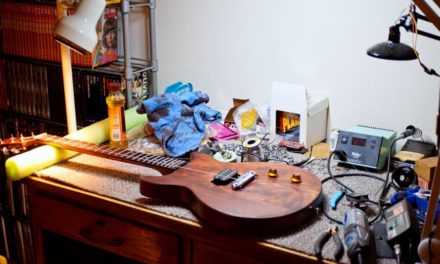


I prefer to use Shielded Twisted Pair cables with multi-strand conductors rather than Coax designs as they are much more reliable, preserve my tone more effectively, save me money (I’m not replacing broken cables regularly), stay noiseless and help save the planet as they are repairable. I have one that is 12 years old and performs as new despite heavy use and abuse. These excellent leads are Chord Company Cream Cable which are made in England by people who actually like music. Cream is a reliable, top tone tool! I hope this is useful to players everywhere.
What about canare cables? 18 guage as opposed to 22, also supposedly can be used as a speaker cable as well.